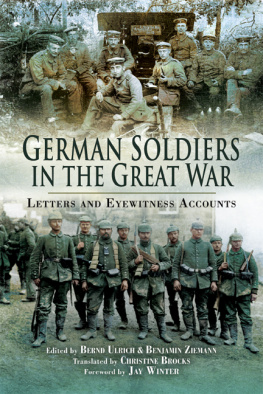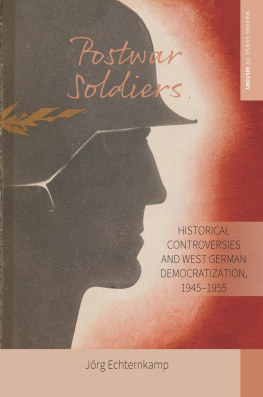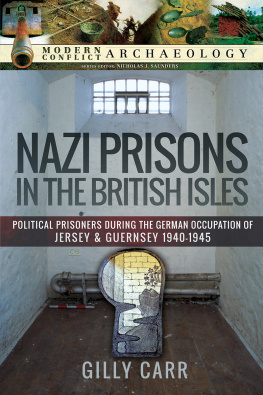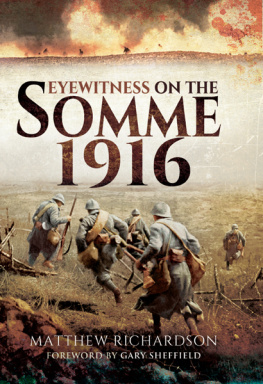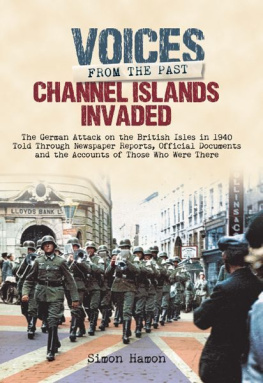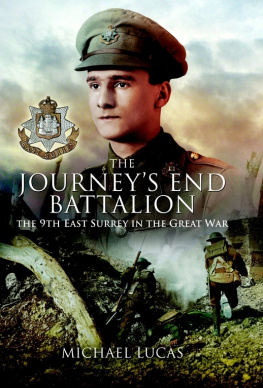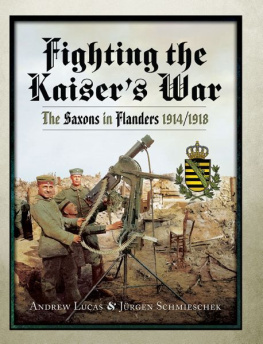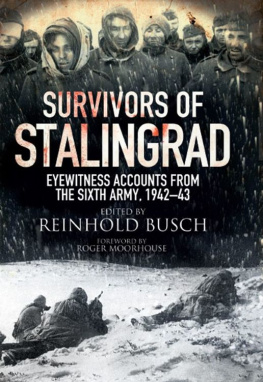

First published in Great Britain in 2010 by
Pen & Sword Military
an imprint of
Pen & Sword Books Ltd
47 Church Street
Barnsley
South Yorkshire
S70 2AS
Copyright Bernd Ulrich and Benjamin Ziemann 2010
ISBN 978-1-84884-141-3
eISBN 9781844687640
The right of Bernd Ulrich and Benjamin Ziemann to be identified as Authors of this Work has been asserted by them in accordance with the Copyright, Designs and Patents Act 1988.
A CIP catalogue record for this book is available from the British Library.
All rights reserved. No part of this book may be reproduced or transmitted in any form or by any means, electronic or mechanical including photocopying, recording or by any information storage and retrieval system, without permission from the Publisher in writing.
Typeset in 11pt Ehrhardt by
Mac Style, Beverley, E. Yorkshire
Printed and bound in the UK by CPI
Pen & Sword Books Ltd incorporates the imprints of Pen & Sword Aviation, Pen & Sword Maritime, Pen & Sword Military, Wharncliffe Local History, Pen and Sword Select, Pen and Sword Military Classics and Leo Cooper.
For a complete list of Pen & Sword titles please contact
PEN & SWORD BOOKS LIMITED
47 Church Street, Barnsley, South Yorkshire, S70 2AS, England
E-mail: enquiries@pen-and-sword.co.uk
Website: www.pen-and-sword.co.uk
Contents
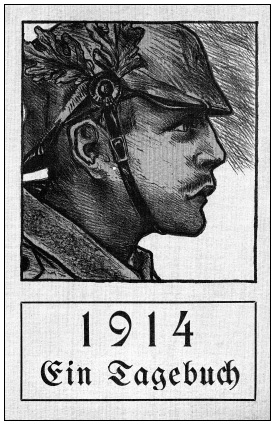
Images like this one, published in 1915, conjured up romantic notions of volunteering for military service. ()
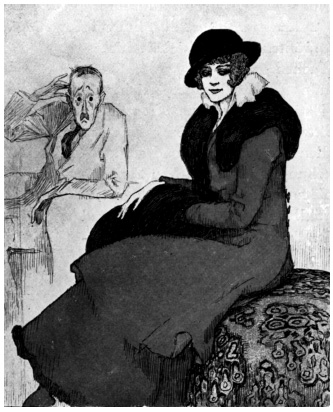
What are your reasons to reject my proposal? The same that disposed the draft board to defer your service (1915). ()
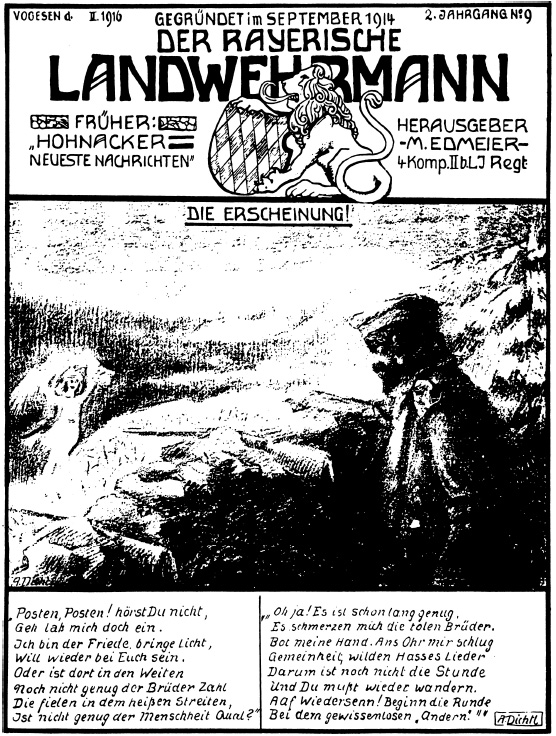
A Bavarian Landwehr soldier has an apparition of peace.
From the cover of a trench newspaper, 1916.
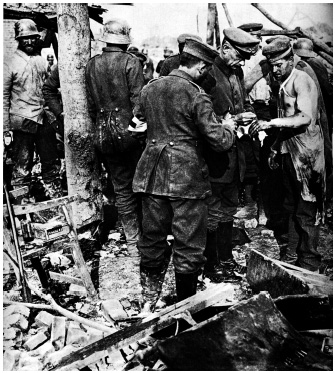
Heimatschuss or Blighty. Official war photograph from the collection of the Bild- und Filmamt (Bufa). ()
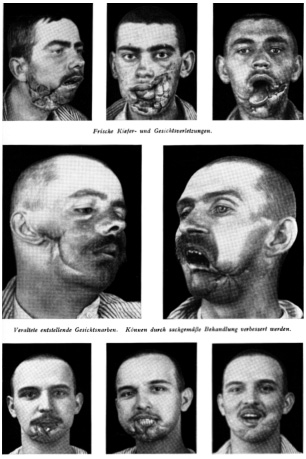
These photographs were meant to demonstrate the success of plastic surgery (1916). Similar photographs of extreme facial injuries were later used by the pacifist Ernst Friedrich in his bestselling book War Against War in 1924. ()
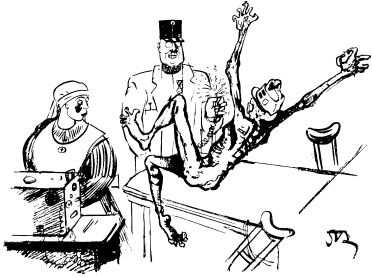
The Kaufmann-method. The treatment of war neurotics revived medieval torture methods caption by Magnus Hirschfeld from his Moral History of the First World War , 1930. ()

Heimatsurlaub (Furlough), picture postcard, c . 1916. ()
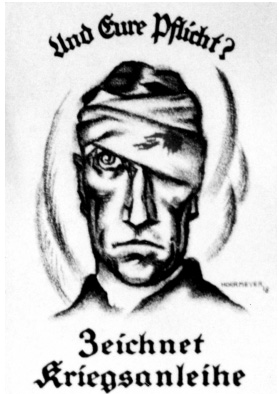
And Your Duty? Sign War Loans, picture postcard, c . 1917. ()
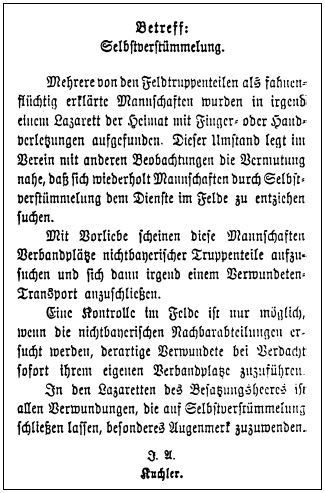
Regarding: Self Mutilation (1915)..
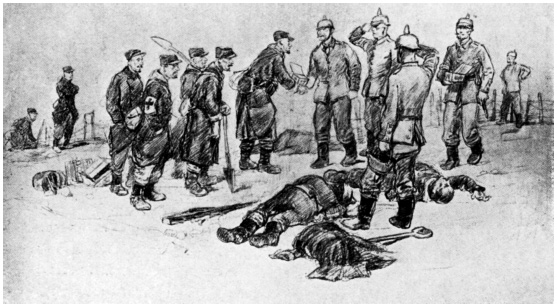
Fraternization between French and German troops. Drawing by a French soldier, 1915. ()
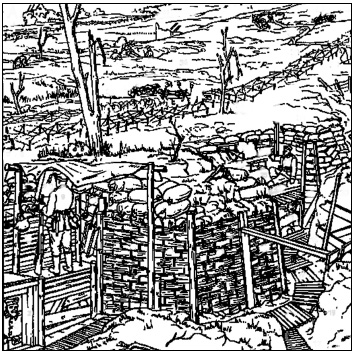
An ideal trench, as depicted in an illustrated German dictionary in 1938.
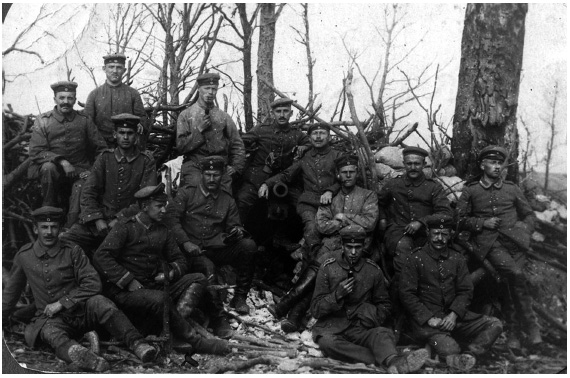
Firing position at Verdun after move to new position (1916). As with the following two photographs, this image is from the album of Theodor Koch and was probably also taken by him. Koch was a platoon leader in the Field Artillery Regiment 33.
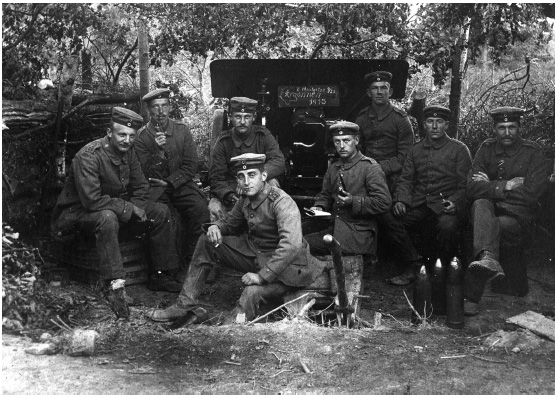
The cannon where I commenced my wartime service (names on the reverse side). This photograph was taken in the Argonne forest in 1915. As with many other images in Kochs album, this group shot documented his comrades.
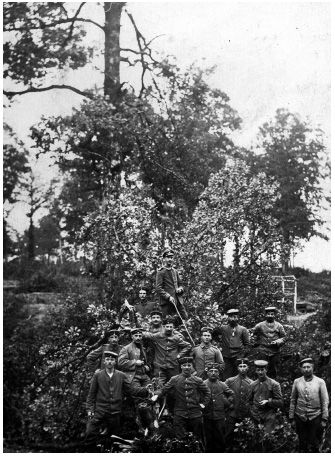
Tree that was brought down at the kitchen of the 4/33. Theodor Koch documented the devastating effects of war, also with photographs of graves of his fallen comrades.
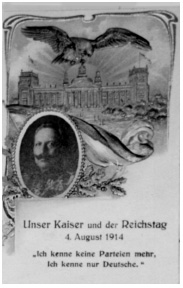
Our Kaiser and the Reichstag 4 August 1914. I recognize no more parties; I recognize only Germans! ()
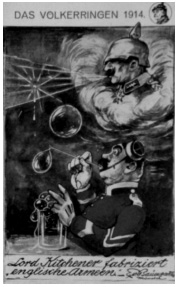
Lord Kitchener produces English armies. This postcard symbolizes the alleged superiority of a conscript army over a volunteer army. ()
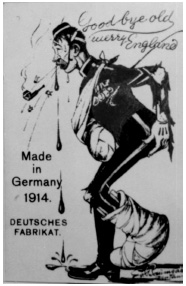
Made in Germany 1914. German product. German Anglophobia in 1914 imagined British soldiers as cowards who would be easy to defeat. Some soldiers noted the contrast with their own experiences in their eyewitness accounts. ()
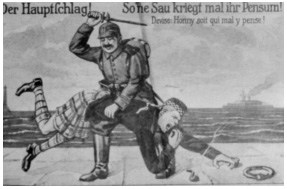
The Main Strike! Such a sod should have its share! Motto: Honi soit qui mal y pense!. Combining the motto of the Order of the Garter and an image of a Scottish soldier, this postcard aims to maximize anti-British symbolism. Note the stroke across the postcard, which was added by a military censor. In the early months of the war, military censorship banned many postcards that aimed to debase the enemies, as they would undermine the dignity of the German war effort.
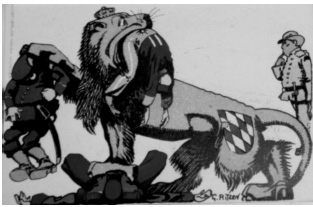
The lion, symbol of Bavarian strength, is eating enemy soldiers. Many Bavarian troops saw Prussian units as inferior in combat performance. ()
Next page
